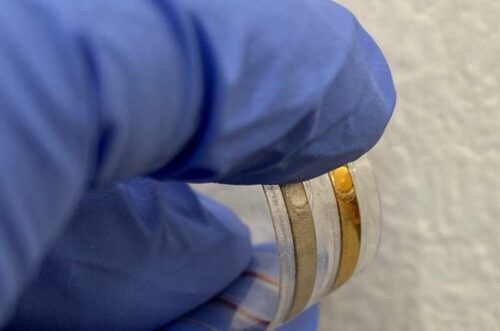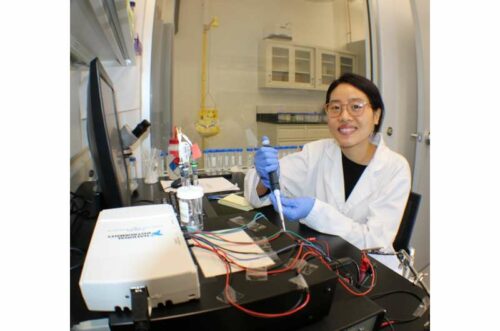Researchers have developed a device that can sense the pH level of food and tell if it is spoiled, in real time.

The freshness of packet foods depends on several factors, including the type of food, the packaging material, storage conditions, and expiration date. Some foods, especially fresh produce, does not have a proper expiry date. Plus, sometimes food spoils even before the mentioned expiry date if it is not stored under proper conditions. Researchers have developed a solution to predict the freshness of food products.
A graduate student at SMU (Southern Methodist University) has developed a miniature pH sensor that can tell when food has spoiled in real time. The flexible pH sensor is only 2 millimeters in length and 10 millimeters wide, making it possible to incorporate the sensor into current food packaging methods, such as plastic wrapping. Industries typically use much bulkier meters—roughly 1 inch long by 5 inches tall—to measure pH levels, so they are not suitable to be included in every package of food to monitor its freshness in real time.

The pH sensors we developed work like a small wireless radio-frequency identification device—similar to what you find inside your luggage tag after it has been checked at airports or inside your SMU IDs. Every time a food package with our device passes a checkpoint, such as shipping logistics centers, harbors, gates or supermarkets’ entrances, they could get scanned and the data could be sent back to a server tracking their pH levels. Such configuration would allow continuous pH monitoring and accurately detect freshness limits along the entire journey—from farms to consumers’ houses.
The pH level is measured by the concentration of hydrogen ions found in a substance or solution. Because hydrogen ions are electrically-charged molecules, the electrodes within the pH sensor can detect the electrical charge generated by the concentration of hydrogen ions inside food, converting the level to pH values using what is known as the Nernst equation. The sensor is made with a very small amount of biocompatible materials and use printing technologies on flexible films.
Researchers believe the device could have potential applications in detecting early warning signs of sepsis or wound infection when they are used on the skin






